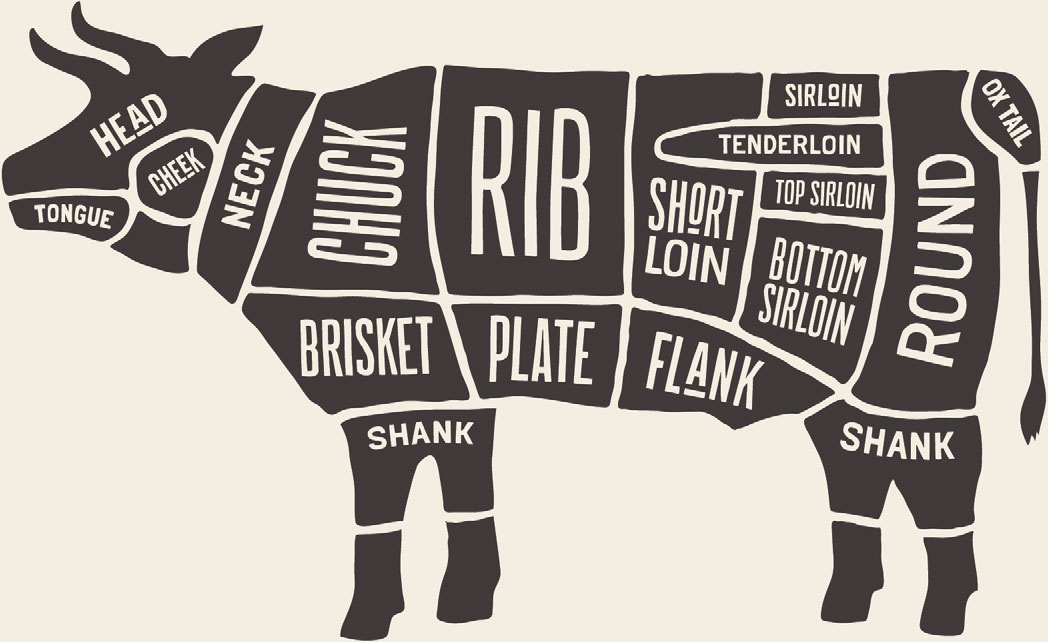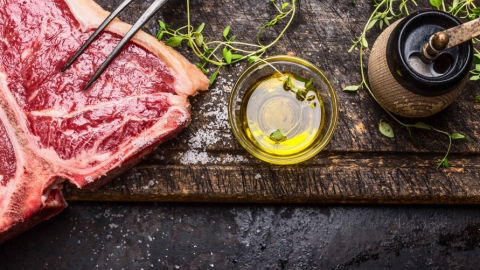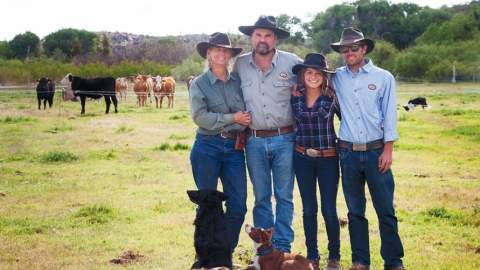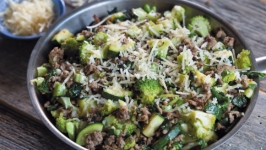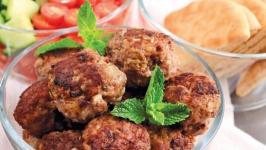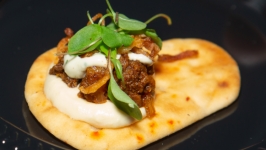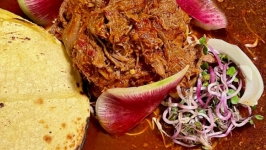Beef Cuts
Chuck is the front shoulder of the animal, and it’s a complicated mass of muscles, some of which are tender, but many of which aren’t. Still, the chuck is full of beefy flavor and includes some nice braising cuts, including the classic pot roast. Much of the chuck ends up as ground meat and roasts.
The rib is behind the chuck, and because of its location near the upper mid-back of the animal, the meat is both tasty and tender. Rib eye steaks and standing rib roasts come from this primal.
A little farther back, you’ll find the short loin primal, which is where the most popular steaks are cut. New York strips, T-bones and Porterhouses all come from the short loin.
The tenderloin, the most tender muscle on the animal, can be removed and packaged whole or can be cut into steaks (filet mignon) and roasts (chateaubriand). Keep in mind that if you want the tenderloin, you won’t be able to have T-bones or Porterhouse steaks because those have a portion of the tenderloin on them. Instead, you’ll end up with boneless strip steaks along with the tenderloin.
Behind the short loin is the sirloin, which is usually divided into the top and bottom. Because it’s near the back of the animal, the sirloin is a little less tender than the short loin. Top sirloin is usually cut into steaks, while bottom sirloin becomes roast, stew meat and ground beef. The tri-tip is part of the bottom sirloin.
The last primal on the back of the animal is the round, which, because it’s a major working muscle, is tougher and leaner than the middle primals. Still, with proper cooking techniques, the round will give you excellent roasts and steaks.
On the lower side of the animal, you’ll find the brisket, plate and flank. Many processors use these primals for ground beef because they can be tough and hard for cooks to work with, but they have so much flavor, they’re worth saving. Ask if you can have those instead of some of the ground beef in your order.


